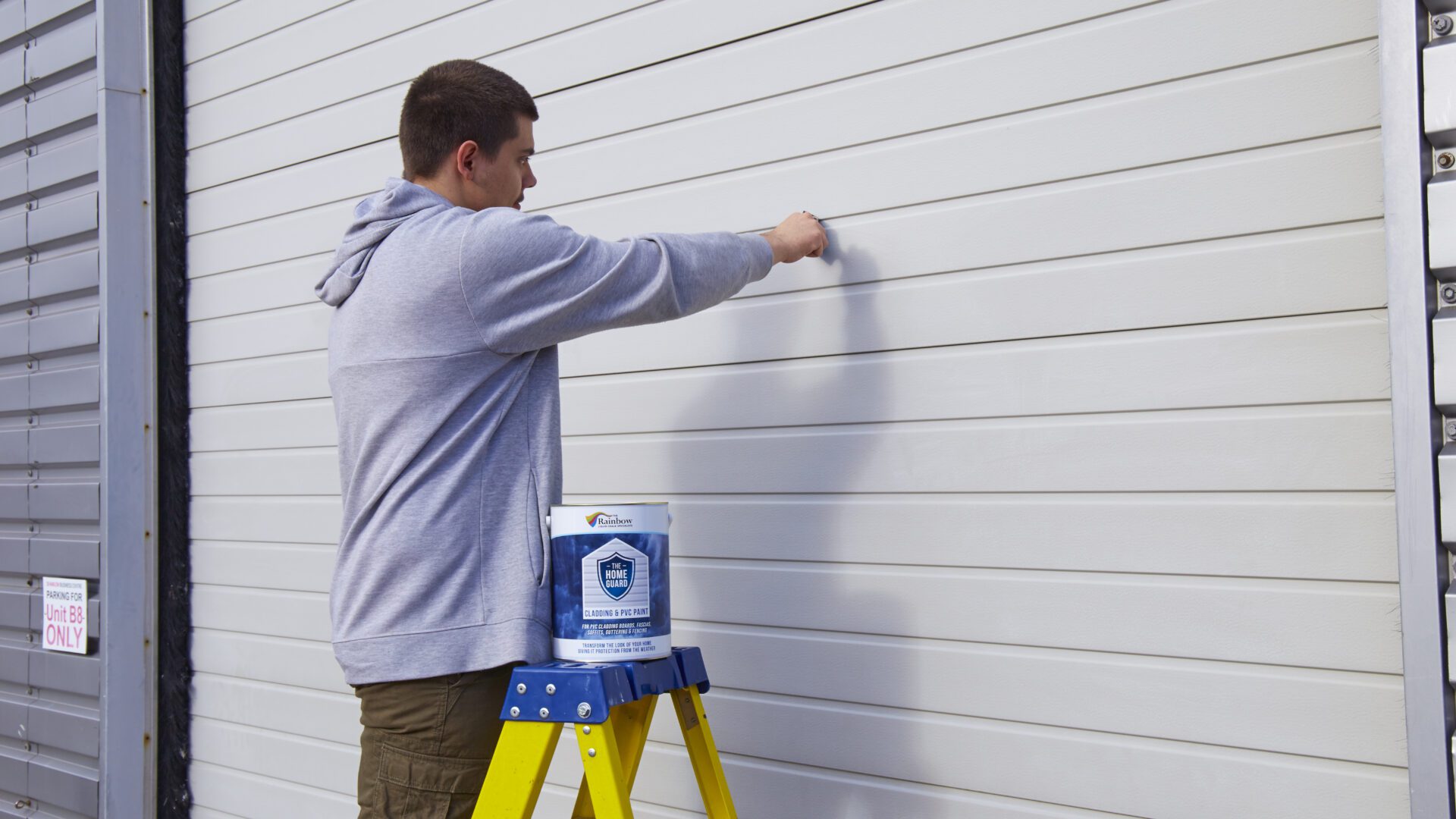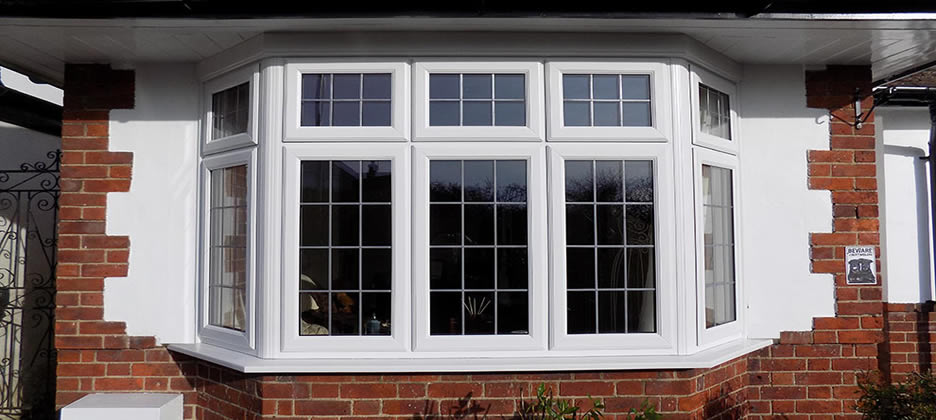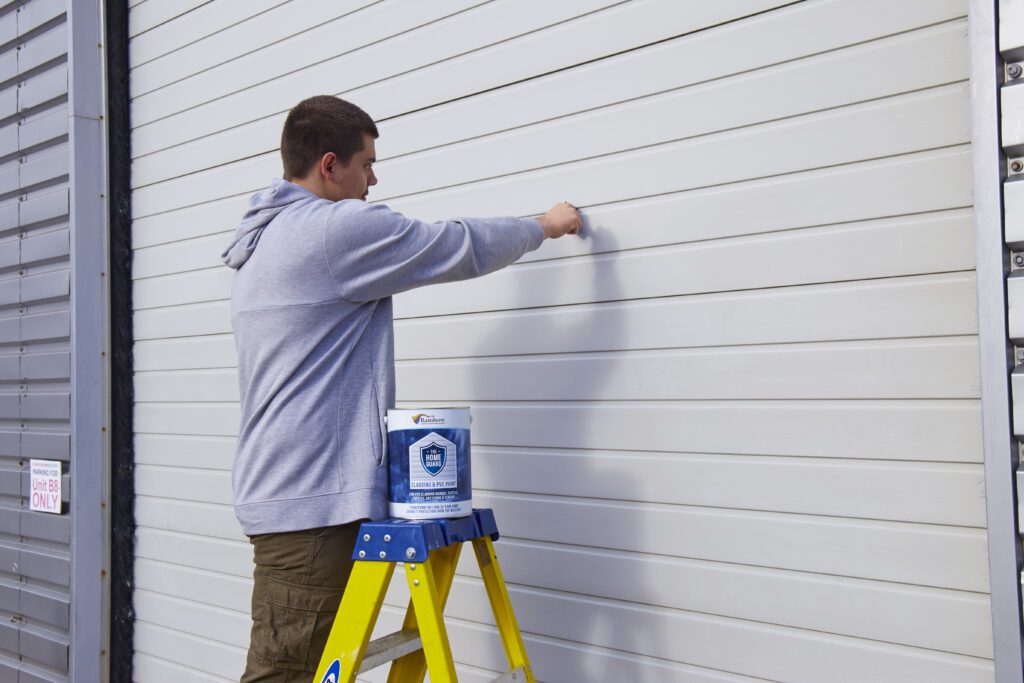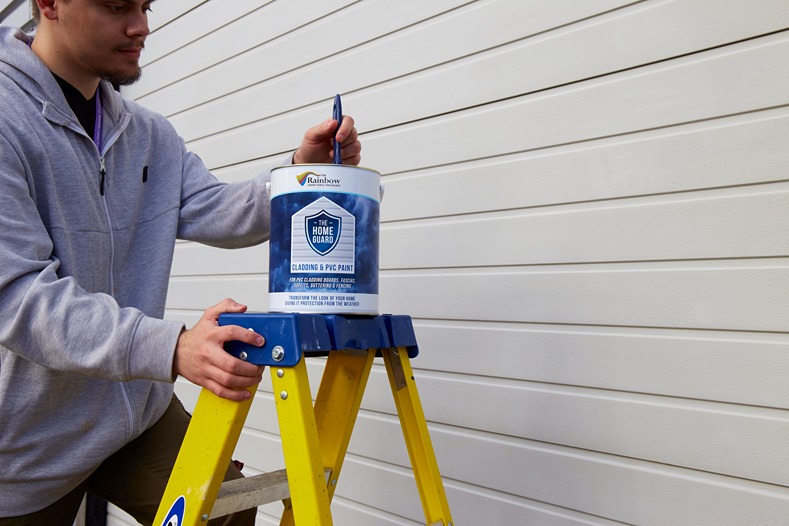
How to Paint UPVC and Get Perfect Results
Painting UPVC might be the most dreaded job among homeowners. It’s a tricky task, mainly because UPVC is notorious for being resistant to paint and results aren’t usually worth the effort. Most paints don’t adhere to the shiny surface of UPVC and can often crack over time as they aren’t flexible enough.
We’re going to give you a step-by-step guide on how to paint UPVC with our specially formulated UPVC paint, so you can achieve perfect results first time!
Issues Most People Face When Painting UPVC
The biggest challenge with UPVC is the shiny, non-porous surface which is not the ideal substrate for paint. Paint struggles to adhere to this smooth surface, and when it does, it often doesn’t last, leading to chipping, cracking, and peeling. This can result in an uneven finish that detracts from the aesthetic appeal of your UPVC elements.
Another issue is the flexibility of UPVC. It naturally expands and contracts with temperature changes, which most paints are not designed to accommodate. This leads to further cracking and peeling over time.
Choosing the wrong type of paint can compound these problems, resulting in wasted time, money, and effort.
Now, this brings us to the crucial question – which paint is best for UPVC?

Choosing the Right Paint
While most conventional paints might disappoint, some products are specifically formulated to adhere to UPVC surfaces, offering lasting results.
Introducing… our Rainbow Home Guard UPVC Cladding Paint.
Coverage
It boasts a thick, opaque, and satin formula that provides excellent coverage, allowing you to change the colour of your UPVC surfaces effectively.
Flexibility
Its special formulation includes flexible acrylic additives that resist cracking and flaking, ensuring the paint can accommodate the natural expansion and contraction of UPVC without compromise.
UV protection
Furthermore, it offers UV ray colour protection to prevent fading from sunlight exposure, maintaining the vibrancy of the paint over time. Lastly, it’s highly durable and weather-resistant, providing a robust defence against varying weather conditions.
Easy to layer
Moreover, it has a quick drying time, reducing the overall painting time and allowing for easier layering. The low-odour formulation is an additional benefit for those who are sensitive to strong paint smells. With Rainbow’s Home Guard UPVC Cladding Paint, you can rest assured of a quality finish that stands the test of time.

Home Guard UPVC Paint
Preparing to Paint your UPVC Surface
For any paint job, thorough preparation is key to a successful outcome. Here are the necessary steps to prepare your UPVC for painting:
1. Cleaning: Before you start painting, clean the UPVC surface thoroughly. Dirt, grime, or dust can affect paint adhesion. Use a sponge or cloth with warm soapy water to clean the surface and then rinse with clean water. Ensure that the surface is thoroughly dry before moving forward.
2. Sanding: Lightly sand the surface with fine-grit sandpaper. This will help create a slightly rough surface which allows for better paint adhesion. Wipe away any dust residue after sanding.
3. Priming: Although not always necessary when using specially formulated paints like Rainbow’s UPVC paint, applying a primer can further enhance paint adhesion and coverage.
How to Paint UPVC
When painting UPVC, the most important thing to remember is to apply very thin layers of paint and wait until they are properly dry before adding another coat.
1. First Coat: Using a good quality brush or roller, apply the first thin coat of paint. It’s essential to apply the paint evenly to avoid drips and achieve a uniform finish. Remember, it’s better to have several thin coats rather than one thick one.
2. Drying: Allow the first coat to dry completely. The drying time may vary based on environmental conditions, but typically, Rainbow’s UPVC paint takes about one to two hours to dry.
3. Additional Coats: Once the first coat is completely dry, apply subsequent coats. It’s crucial to ensure each coat is thoroughly dry before applying the next. Usually, two to three coats are sufficient for a robust and smooth finish, but this could vary based on your specific requirements.
4. Curing: After the final coat, allow the paint to cure completely. This may take a couple of days. During this time, avoid any heavy use that may damage the paint.

Common Mistakes to Avoid When Painting UPVC
For an ideal paint job on UPVC surfaces, being aware of potential pitfalls is as important as following the best practices. Here are some common mistakes you should avoid:
Rushing the Prep Work: Preparation might seem tedious, but it’s a vital step that shouldn’t be rushed. A clean, slightly rough surface is the best foundation for paint.
Skipping Primer: While certain specially-formulated paints might not require a primer, using one can improve the paint’s adhesion and coverage. Always check the paint manufacturer’s instructions.
Applying Thick Coats of Paint: The urge to finish the painting job quickly might tempt you to apply thick coats of paint. Resist this urge! Multiple thin layers will yield a more even, durable finish.
Not Allowing Adequate Drying Time: It’s crucial to allow each coat of paint to dry completely before applying the next. Ignoring this can lead to smudges, drips, and an uneven finish.
Caring for Painted UPVC
Once you’ve accomplished the task of painting your UPVC surfaces, maintaining their aesthetic appeal over time becomes essential. Regular cleaning of the painted surfaces plays a crucial role in this maintenance process. Use a soft, damp cloth for this purpose, avoiding abrasive cleaners that could potentially scratch and damage the paint surface.
Another important aspect is attending to minor repairs. Should you notice any minor chips or scratches on your painted UPVC, ensure you touch them up promptly. Doing so prevents the damage from escalating, ensuring your surfaces continue to look their best.
While the durability of Rainbow’s Home Guard UPVC Cladding Paint is a noteworthy feature, it’s advisable to avoid heavy impacts that might damage the surface. This means treating your painted UPVC with care to maintain the integrity of the paint.
Lastly, make it a point to regularly inspect the painted surfaces. Look out for any signs of wear or damage. Regular inspection allows you to address any emerging issues before they morph into significant problems, thus keeping your UPVC surfaces looking fresh and vibrant for longer.
Conclusion
To conclude, successfully painting UPVC requires understanding its unique challenges, choosing the right paint, properly preparing the surface, applying paint correctly, and caring for the painted surface.
Avoiding common painting mistakes can significantly enhance the longevity and appearance of your UPVC elements. By using a specially formulated product like Rainbow’s Home Guard UPVC Cladding Paint, you can rest assured that your UPVC surfaces will look vibrant and fresh for years to come. Happy painting!
